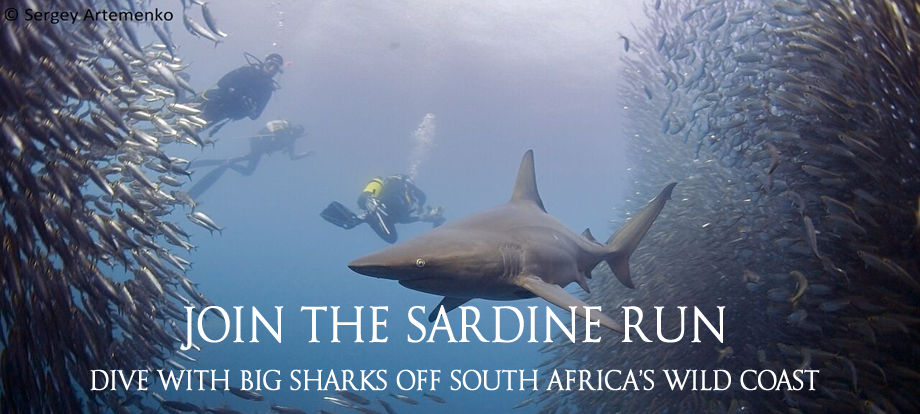Special Diving Expedition: Sardine
Run
FAQ
Do I need to be a certified diver?
No. Roughly 75% of the diving is done on snorkel. Action can also be observed from the boat.
When does the Sardine Run happen?
The Sardine Run is a natural phenomenon and as such, is subject
to its own timetable and agenda. The run generally begins toward
the end of May and can extend into late July, though the movements
of the shoals are virtually impossible to forecast. We dive
over the period which historically falls in the middle of the
run.
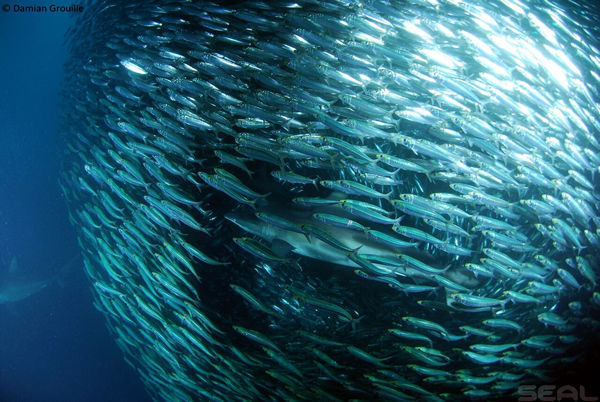
If I want to scuba dive, what are the requirements?
You must be an Advanced Diver with verified experience. You will be required to present your dive card and logbook to SEAL Expeditions for review
How do we find the action?
Normally, the activity of the sea birds is a dead giveaway,
but if the shoals are far out to sea we use the services of
a microlight aircraft. As soon as the pilot spots the sardines
he communicates with the boats and guides them to the shoals
of fish. We get additional information from the Natal Sharks
Board boats and other boats in the area to view this spectacle.
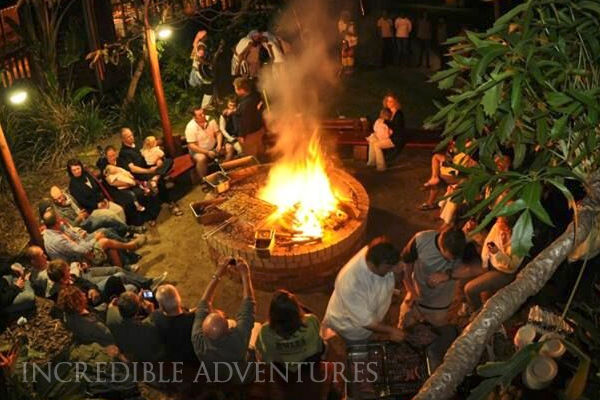
Is the trip for everyone?
The Sardine Run is open to divers and non-divers. Snorkeling is
also an option. The activity as a whole is considered to be strenuous. There
is no hospital nearby so you should be in very good health.
The trip can be summed up like this: big sharks, no bottom diving,
deep blue type diving, dirty water, multiple ascents and strenuous
boat trips.
Non-diving guests are welcome to join the trip and ride on the boat to witness the surface activity
but one must understand the boat is a "duck" and does not have toilet
facilities or any shade. The cost for a non-diver is the same.
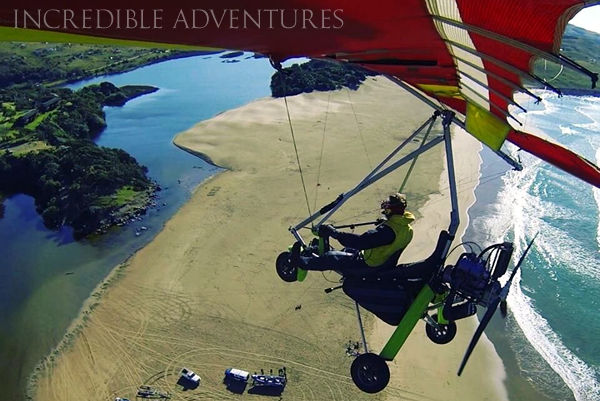
What is the diving like?
We launch the boat at approx 06h30. As soon as the sun is
up the microlight takes off and flies up and down the coast
looking for the telltale signs of the shoal. Because we are
looking for activity that is moving, we spend most of the day
at sea. When we find activity - sardines, whales, dolphins,
sharks, etc. - a decision is made as to whether snorkeling or
diving is most appropriate for the particular opportunity. Often
the action is quite far out to sea and in deep waters, where
it is not possible to drop down to the ocean floor. As a result,
most dives are done in mid-water, as the bottom is often far
too deep for sport divers.
Dives on average are of a fairly short duration as the action
moves past quite quickly. Often it is a matter of being in the
water for 5 or 10 minutes and then quickly back on the boat
to follow the activity and then jump in again. The activity,
as a whole, is considered strenuous. When it’s determined it’s
best to snorkel, divers are dropped in front of the "activity"
and wait on the surface for the activity to reach and pass them.
The emphasis of the trip is on the surface activity and being
right in the action with all the sardines, dolphins, sharks,
birds etc. This adventure isn’t for the faint hearted!
Who are the expedition leaders?

The Sardine Run Adventure is operated by our good friends at SEAL Expeditions. Owner Nic de Gersigny has been IA's representative in South Africa for nearly 20 years and has been leading Incredible Adventures clients on the Sardine Run since 2003.
Join Nic and the rest of the SEAL Expeditions team for an incredible adventure in South Africa.
"9 days
in South Africa with Nic was a really great experience
not to forget. We spent a great time diving and sightseeing
all around the coast. Nic, we didn't expect that kind
of service, you put everything in it to give us a great
time. We will meet again, Thanks, Bru"
~ Roland & Rosie Juvyns (Brussels) |
What kind of boats are used?
SEAL runs several 8 metre twin - engine dive boats - each fitted to accommodate 12 divers. We typically limit the number to 8 divers per boat + 2 SEAL staff, for everyone’s comfort.

What is the water temperature and visibility in June & July?
Water temperatures are around 19 degrees and 21 degrees
C. (66 to 70 degrees F) The "Run" takes place during South Africa’s
winter which is dry season. Theoretically, this means there’s
little runoff from rivers so the water should provide good visibility.
In reality, because the sardines and their prey can really churn
up the water, visibility can be anything from 5 meters (15 ft)
to 20 meters-plus (60 ft). For safety, we don’t enter the water unless there is at least 15 ft visibility. We recommend a 7 mm wetsuit with hood, boots and gloves.
What is the weather in June & July?
These are winter months in South Africa. Pack for rain, but expect generally dry weather and a temperature range of 59 - 75 F / 15 - 24 C.
Are there any health requirements?
You should be in reasonably good health and have , or be up - to - date on recommended vaccinations before arriving in South Africa. The Sardine Run is an active adventure and can be physically challenging. While it is not required that you be physically fit, the more fit you are, the more you’ll enjoy the adventure
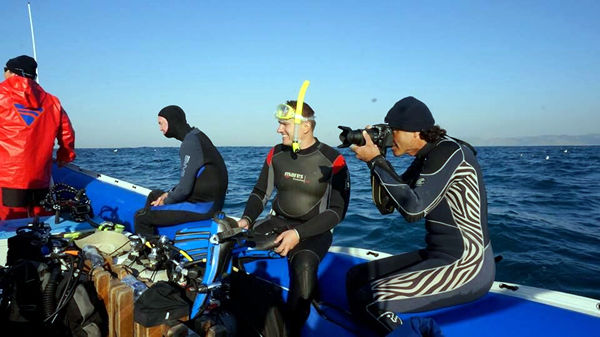
What kind of boat do we use?
We will be using eight meter "rubber ducks" (Zodiacs or similar),
each accommodating 6 - 8 divers. Each boat is licensed with
the Department of Transport and has a fully qualified shipper
and dive master on board. There is oxygen, a DAN First Aid Kit
and communications with shore via ship-to-shore radio and cellular
phone.
What dive equipment is needed?
Due to the extreme nature of the Sardine Run and in order for
your comfort and ease in the water, we recommend bringing your
own dive gear. Gear and equipment is available for rental in
Durban and Johannesburg but then you run the risk of being in
the middle of one of the greatest dive adventures of all time
and having equipment that’s not working perfectly for you.
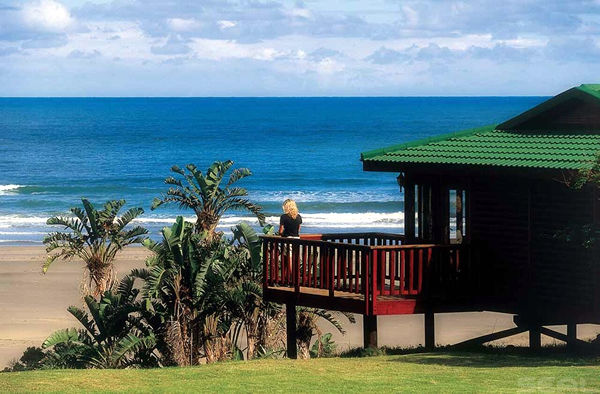
Where do we stay? What about meals?
You’ll stay at the Mbotyi
River Lodge. Meals at the Lodge are included. If we
launch before the dining room opens, we’ll be provided boxed
breakfasts we can eat on the boat. Mbotyi is a very remote
spot on the Transkei coast. Two divers share a room. (Alcohol
is not included.)
What else is there to do in Mbotyi?
If weather prevents taking the boat out, don’t worry. You’ll
still have a fun day. Here are some of the activities available:
-
Take a microlight flight: See the endless
shoals from the air
-
Visit an authentic traditional medicine man
-
Ride horses in the hills and forests around
the hotel
-
Hike to the magnificent falls overlooking
the area where the sardines mass
-
Hike to Mugwa Falls
-
Hike in Mboyti Forest, the largest indigenous
coastal forest in South Africa.
 SARDINE RUN OVERVIEW SARDINE RUN OVERVIEW
E-mail or call Incredible Adventures
today for further details: 800 644-7382 |


